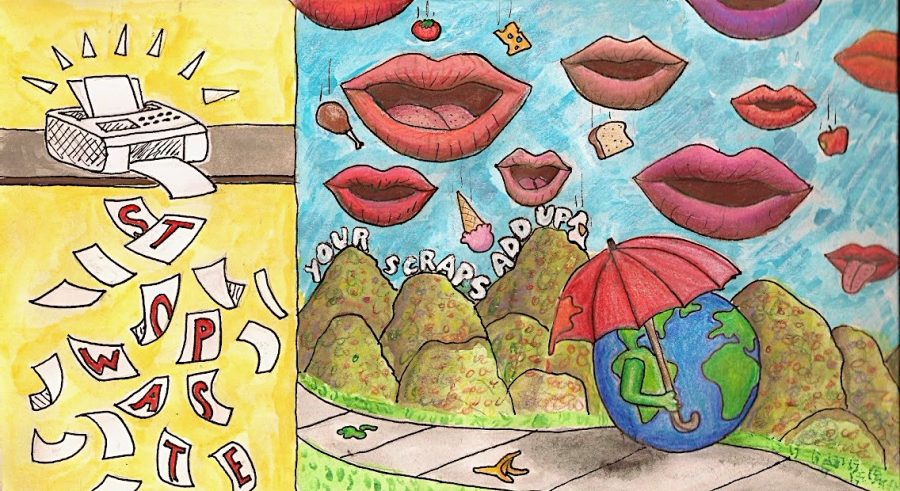Blue Valley should work together to create environmentally friendly campus to improve health, community
Climate change is a global issue that can seem impossible to take on — often times, casual supporters of the fight against climate change are quick to drop a few words on social media or some money to an impersonal organization.
However, if we want to make any type of change we directly benefit from, we need to act locally, and the best place for action is right here at Blue Valley.
There are many options BV could pursue to become greener, but administrators, teachers and students must join together in the effort.
On the administration side, there should be a bigger push to eliminate waste during lunch and classes.
The styrofoam trays nearly every student uses during lunch time take centuries to decompose and are the main pollutants of U.S. water sources, according to Washington University.
There are reusable trays, but students aren’t willing to use them because they have to travel back to the cafeteria to return them. If the school sets up more drop-off areas, we could decrease our styrofoam use.
Additionally, our school should attempt to waste less food. Blue Valley West puts out boxes for students to put uneaten fruit in — this doesn’t completely eliminate waste, but it’s easy to execute and helps in the long run.
Another great way to decrease waste is setting up a compost. Composting would decrease our carbon footprint, since food waste is 7 percent of all global emissions, according to the Washington Post.
And as we inch closer to winter break, our binders begin reaching maximum capacity with excessive papers — people should think carefully about how much they print.
Students shouldn’t be excluded from these changes, either. Consider: when you’re getting your lunch, are you really going to finish that apple or the mountain of ice cream on that cone?
If you want to help fight climate change and create a cleaner school, there are plenty of opportunities to do so in this school. Environmental Club, which meets every Wednesday during Tiger Paws outside science teacher Larry Hare’s classroom, needs help recycling the growing piles of plastic bottles across the school.
On a bigger level, if students research and communicate with the district about executing green alternatives, then lasting impacts could be created.
For example, when BV was about to receive new parking lots, there was the opportunity to implement green parking lots, which would directly impact the land around us.
Essentially, there are no excuses regarding becoming more environmentally friendly — there are many simple solutions.
If students, faculty and administrators team up, not only could we make our school greener, we could influence the communities around us to follow in our steps, creating a cleaner Kansas and a cleaner world.

Kaitlin Yu is co-editor in chief of “The Tiger Print.” She appreciates the arts, loves cats and dogs and takes pleasure in wasting her time away by...




